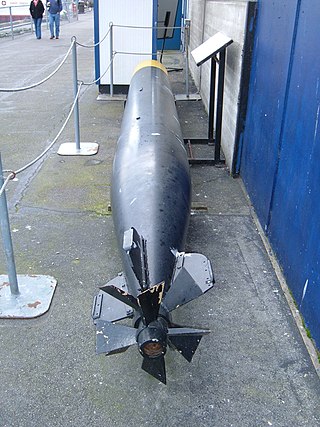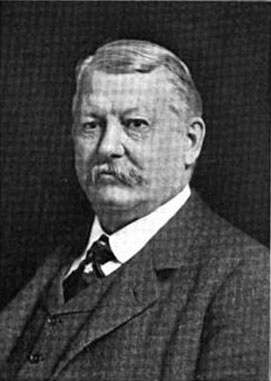Related Research Articles

The Benham class of ten destroyers was built for the United States Navy (USN). They were part of a series of USN destroyers limited to 1,500 tons standard displacement by the London Naval Treaty and built in the 1930s. The class was laid down in 1936-1937 and all were commissioned in 1939. Much of their design was based on the immediately preceding Gridley and Bagley-class destroyers. Like these classes, the Benhams were notable for including sixteen 21-inch (533 mm) torpedo tubes, the heaviest torpedo armament ever on US destroyers. They introduced a new high-pressure boiler that saved space and weight, as only three of the new boilers were required compared to four of the older designs. The class served extensively in World War II in the Atlantic, Mediterranean, and Pacific theaters, including Neutrality Patrols in the Atlantic 1940-1941. Sterett received the United States Presidential Unit Citation for the Battle of Guadalcanal and the Battle of Vella Gulf, and the Philippine Republic Presidential Unit Citation for her World War II service. Two of the class were lost during World War II, three were scrapped in 1947, while the remaining five ships were scuttled after being contaminated from the Operation Crossroads atomic bomb tests at Bikini Atoll in the Pacific.

The Gridley-class destroyers, named for Charles Vernon Gridley, were a class of four 1500-ton destroyers in the United States Navy. They were part of a series of USN destroyers limited to 1,500 tons standard displacement by the London Naval Treaty and built in the 1930s. The first two ships were laid down on 3 June 1935 and commissioned in 1937. The second two were laid down in March 1936 and commissioned in 1938. Based on the preceding Mahan-class destroyers with somewhat different machinery, they had the same hull but had only a single stack and mounted sixteen 21 inch (533 mm) torpedo tubes, an increase of four. To compensate for the increased torpedo armament weight, the gun armament was slightly reduced from five 5"/38 caliber guns (127 mm) to four. USS Maury (DD-401) made the highest trial speed ever recorded for a United States Navy destroyer, 42.8 knots. All four ships served extensively in World War II, notably in the Solomon Islands and the Battle of the Philippine Sea, with Maury receiving a Presidential Unit Citation.

The Howell Automobile Torpedo was the first self-propelled torpedo produced in quantity by the United States Navy, which referred to it as the Howell Mark I torpedo. It was conceived by Lieutenant Commander John A. Howell, United States Navy, in 1870, using a 60 kg (130 lb) flywheel spun at a very high speed to store energy and drive propellers.

The Mark 14 torpedo was the United States Navy's standard submarine-launched anti-ship torpedo of World War II. This weapon was plagued with many problems which crippled its performance early in the war. It was supplemented by the Mark 18 electric torpedo in the last two years of the war. From December 1941 to November 1943 the Mark 14 and the destroyer-launched Mark 15 torpedo had numerous technical problems that took almost two years to fix. After the fixes, the Mark 14 played a major role in the devastating blow U.S. Navy submarines dealt to the Japanese naval and merchant marine forces during the Pacific War.
Frank McDowell Leavitt (1856–1928) was an American engineer and inventor. Leavitt devised one of the earliest machines for manufacturing tin cans and later invented the Bliss-Leavitt torpedo, the chief torpedo used by United States Navy in World War I. Leavitt was part of an emerging cadre of American engineers whose design feats were putting United States manufacturing might on the map at the dawn of the twentieth century.

The Bliss–Leavitt Mark 8 torpedo was the United States Navy's first 21-inch (530 mm) by 21-foot (6.4 m) torpedo. Although introduced prior to World War I, most of its combat use was by PT boats in World War II. The torpedo was originally designed in 1911 by Frank McDowell Leavitt of the E. W. Bliss Company and entered full mass production in 1913 at the Naval Torpedo Station in Newport, Rhode Island. It was deployed on destroyers and battleships during World War I and cruisers built in the 1920s. All US battleships and most cruisers had their torpedo tubes removed by 1941. The Mark 8 remained in service through World War II on older destroyers, primarily the Wickes and Clemson classes. It also equipped PT boats early in World War II, but was replaced by the Mark 13 torpedo on most of these in mid-1943.

The E. W. Bliss Company was a manufacturer of machine tools founded by Eliphalet Williams Bliss. The company was based in Brooklyn, New York and relocated to Hastings, Michigan in 1919.

Eliphalet Williams Bliss was an American manufacturer and inventor who established the E. W. Bliss Company of Brooklyn, New York. His company supplied the US Navy with Whitehead and Bliss-Leavitt torpedoes, as well as projectiles for its naval guns during the Spanish–American War, World War I and World War II.

The Bliss-Leavitt torpedo was a torpedo designed by Frank McDowell Leavitt and manufactured by the E. W. Bliss Company of Brooklyn, New York. It was put into service by the United States Navy in 1904 and variants of the design would remain in its inventory until the end of World War II.
The Whitehead Mark 1 torpedo was the first Whitehead torpedo adopted by the United States Navy for use in an anti-surface ship role after the E. W. Bliss Company of Brooklyn, New York secured manufacturing rights in 1892. The US Navy made an initial acquisition of 100 Mark 1s, which, by the time they entered American service, were faster, had longer range and carried a larger warhead than Robert Whitehead's earlier models.
The Whitehead Mark 1B torpedo, designated as a Torpedo Type B, was a variant of the Whitehead Mark 1 torpedo adopted by the United States Navy for use in an anti-surface ship role after the E. W. Bliss Company of Brooklyn, New York secured manufacturing rights in 1892. The primary differences between the Mark 1 and the Mark 1B were that the Mark 1B was longer, carried a heavier guncotton charge in the warhead and included an improved guidance system.

The Whitehead Mark 3 torpedo was a Whitehead torpedo adopted by the United States Navy for use in an anti-surface ship role after the E. W. Bliss Company of Brooklyn, New York secured manufacturing rights in 1892.
The Whitehead Mark 5 torpedo was a Whitehead torpedo adopted by the United States Navy for use in an anti-surface ship role in 1910. The Mark 5 was the first torpedo to be manufactured by a foreign company, the Whitehead facility in the United Kingdom, and in 1908, by the Naval Torpedo Station in Newport, Rhode Island. It was also the first torpedo to allow the firing ship to vary the torpedo's speed and range.
The Bliss-Leavitt Mark 1 torpedo was a Bliss-Leavitt torpedo adopted by the United States Navy for use in an anti-surface ship role after the E. W. Bliss Company of Brooklyn, New York, which had been building Whitehead torpedoes for the US Navy, began designing and manufacturing their own torpedoes in 1904.
The Bliss-Leavitt Mark 2 torpedo was a Bliss-Leavitt torpedo adopted by the United States Navy for use in an anti-surface ship role after the E. W. Bliss Company of Brooklyn, New York, which had been building Whitehead torpedoes for the US Navy, began designing and manufacturing their own torpedoes in 1904. It was the first American-built torpedo to feature counter-rotating turbines, each driving a propeller. This design eliminated the unbalanced torque that contributed to the tendency of its predecessor to roll.
The Bliss-Leavitt Mark 3 torpedo was a Bliss-Leavitt torpedo adopted by the United States Navy in 1906 for use in an anti-surface ship role.
The Bliss-Leavitt Mark 4 torpedo was a Bliss-Leavitt torpedo developed and produced by the E. W. Bliss Company in 1908. It was the first American-built torpedo specifically designed to be launched from a submarine. About 100 Mark 4s were purchased for experimental purposes by the United States Navy, which led to design improvements to the gyro and the reducing valve. It was used on submarines of the C and D classes. The Mark 4, and all other torpedoes designed before the Bliss-Leavitt Mark 7 torpedo, were considered obsolete and withdrawn from service in 1922.

The Bliss-Leavitt Mark 7 torpedo was a Bliss-Leavitt torpedo developed and produced by the E. W. Bliss Company and the Naval Torpedo Station in Newport, Rhode Island in 1911.

The Short Mark 7 torpedo was a variant of the Bliss-Leavitt Mark 7 torpedo developed by the Washington Navy Yard in order to fit certain submarine torpedo tubes in 1917. The Short Mark 7, also designated Torpedo Type D, had an air flask that was shortened and a reduced warhead weight. The fuel and water tanks were relocated to obtain more air flask capacity; the fuel tank was mounted in the aft air flask bulkhead, while the water tanks were mounted in the after-body. The overall weight of the warshot torpedo was 590 pounds lighter and 58 inches shorter than the Mark 7. The air, fuel and water capacities were approximately one-third of the capacities found on the full-size Mark 7. This torpedo was never produced in quantity.
The Bliss-Leavitt Mark 9 torpedo was a Bliss-Leavitt torpedo developed and produced by the E. W. Bliss Company and the Naval Torpedo Station in Newport, Rhode Island in 1915. The Mark 9 was originally intended to be used on battleships. Before the Mark 9 could be issued, however, use of torpedoes on battleships was discontinued and Mark 9 torpedoes were placed in storage. These torpedoes were modified for deployment on R-class and S-class submarines, and used in early World War II to supplement the initial supply of Mark 14 torpedoes. Torpedo production for the U.S. Navy was terminated by the E.W. Bliss Company about 1920 after completion of the Mark 9 project.
References
- ↑ "United States of America, Torpedoes Pre-World War II" . Retrieved 25 June 2013.